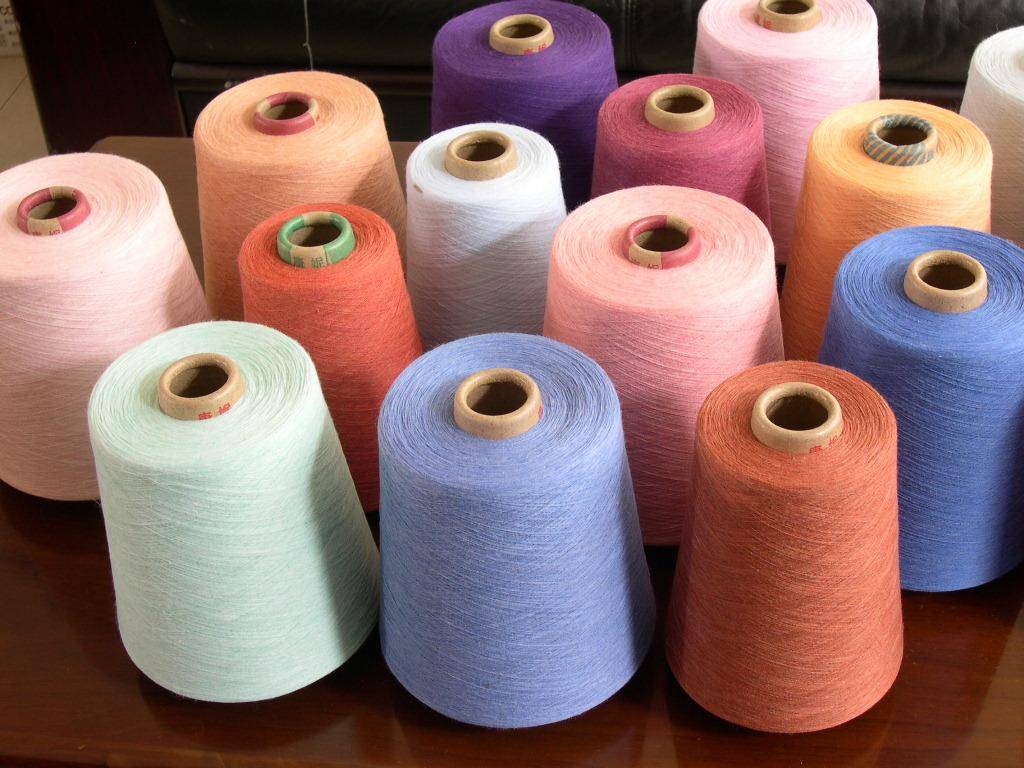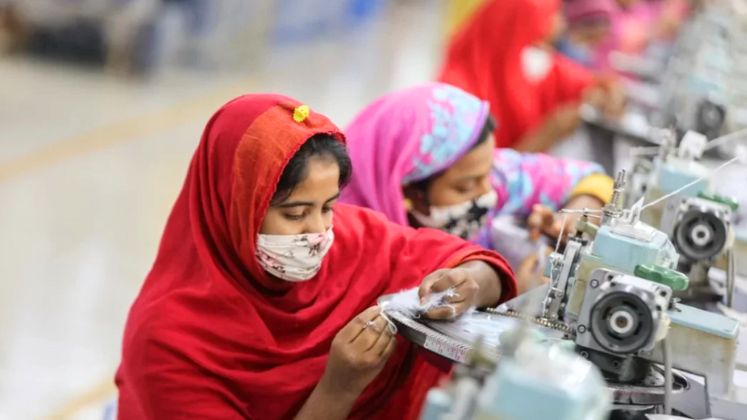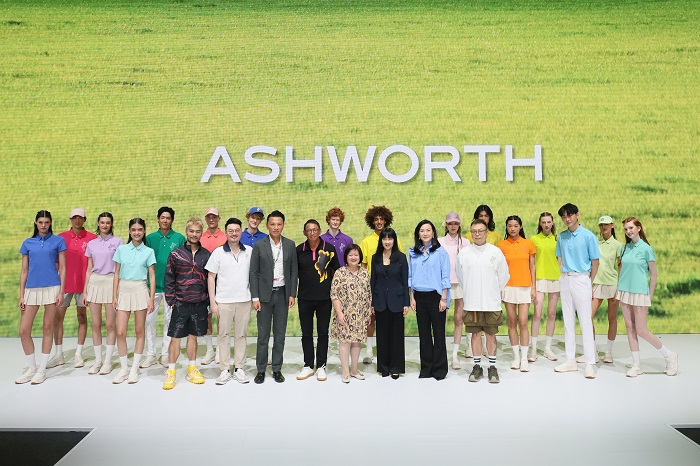FW
The second edition of Texprocess Americas, the North American trade show featuring equipment and technology for the development, sourcing and production of sewn products, will commence from May 13-15, 2014 at the Georgia World Congress Center in Atlanta, GA. Owned by Messe Frankfurt and co-produced with SPESA, the show will be co-located with Techtextil North America, the international trade fair for technical textiles and nonwovens.
For the first time in 2014, the Technology Solutions Pavilion will include both exhibits highlighting technologies such as 2D/3D design, PLM, ERP, costing, supply chain management and shop floor control and a Technology Solutions Theater, with a continuously running series of vendor-sponsored educational presentations.
[TC]2 will host the Cool Zone on the show floor to showcase current and future leading-edge technologies. Included will be [TC]2's 3D body scanning; AM4U's purchase activated manufacturing; Baxter the robot; Yunique Solutions' (Gerber Technology) mobile- and cloud-based product development; Henderson Sewing's robotic sewer; iStyling's virtual dressing and style/fit recommendations and more. (iStyling is a retail solution that uses [TC]2's 3D body scanning and avatar creation technology to provide personalized styling, color and fashion recommendations. Made-to-measure and best fit recommendations are provided to address the needs of brands and specialty stores.)
About 170 equipment, solution and service providers and organizations are expected to participate at Texprocess, including Lectra, Infor, Gerber Technology and Yunique Solutions, Simparel, Human Solutions North America, FDM4 International, Computer Generated Solutions, OptiTex USA, Alvanon and more.
Texprocess.messefrankfurt.com
Honeywell Resins and Chemicals plans to expand its production facility in Chesterfield, Virginia to cater to the rising demand for high-grade nylon polymers for packaging film and other applications. The new production line will be able to produce both nylon 6 and copolymer nylon 6/6.6 resins, with flexibility to produce either to match customer demand. The new line will have a capacity of 40,000 metric tonne per year and is expected to start production in the fourth quarter of 2015, expanding capacity at the facility to 200,000 metric tonnes per year.
Honeywell’s resins, sold under the Aegis brand name, are used in various applications such as fibers and filaments for carpeting, fabrics, nets and cords; engineered plastic components for automotive, consumer and industrial applications; and films for food and protective packaging.
Honeywell Resins and Chemicals is also a major producer and global supplier of caprolactam, a merchant-grade, nylon 6 intermediate used in a range of applications, including carpet, textiles, engineering plastics, films and industrial filament. The Honeywell plant in Hopewell, Virginia, with a capacity of 350,000 metric tons of caprolactam per year, is one of the largest single-site caprolactam production facilities in the world. Honeywell caprolactam is sold globally and shipped either in molten or flake form to a variety of downstream customers.
In addition to caprolactam and resins, Honeywell Resins and Chemicals sells chemical intermediates, including phenol, cyclohexanone and acetone. It is also a major producer of ammonium sulfate fertiliser, a co-product of caprolactam production, which is sold under the Sulf-N brand.
www.honeywell.com
The latest figures from the Department of Commerce's Office of Textiles and Apparel (OTEXA) show the volume of US apparel imports in February fell 4.2 per cent to 1.98 billion sq. mt. equivalents (SME). This is lower than both the 2.07 billion SME booked last year and the 2.14 billion SME in January. The numbers also contrast starkly with the 0.4 per cent rise in imports of all goods and services into the US during the month.
Of the top 10 US apparel supply countries, five saw their imports fall. By far the biggest decline was booked by the largest supplier, China, whose shipments were down 12 per cent to 754 million SME during the month. Bangladesh, at number three, witnessed a drop of 10.2 per cent to 136 million SME, and Indonesia (number four) slipped by 4.6 per cent to 109 million SME.
While Vietnam, which ranked as the fastest-growing apparel supplier to the US last year, continued to gain as both producers and buyers diversify their supply chains. Its February imports were up 6.5 per cent year-on-year to 225 million SME, with the positive turnaround in apparel business owing to the benefits of the proposed Trans-Pacific Partnership (TPP) trade treaty with countries including Canada and the US
Other countries like Honduras, Cambodia, Mexico, and India gained from a rise in shipments to the US. However, exports from El Salvador and Pakistan witnessed a sharp decline. Among the most important regional supply groups, ASEAN rose just 0.1 per cent while South Asia fell 1.6 per cent.
Otexa.ita.doc.gov
 As per International Textile Manufacturers Federation (ITMF) analysis global yarn production dropped in Q4 of 2013 in comparison to the previous quarter as a result of lower output in Asia, South and North America while production in Europe was up. Year-on-year global yarn production was up in all regions except South America. Worldwide yarn stocks rose due to higher inventories in Europe and Asia and despite lower ones in South America. On an annual basis global yarn stocks were up in all regions, except in South America. Yarn orders in Europe increased slightly but dropped in Brazil in Q4/2013. Compared to last year’s quarter yarn orders were lower both in Brazil and Europe.
As per International Textile Manufacturers Federation (ITMF) analysis global yarn production dropped in Q4 of 2013 in comparison to the previous quarter as a result of lower output in Asia, South and North America while production in Europe was up. Year-on-year global yarn production was up in all regions except South America. Worldwide yarn stocks rose due to higher inventories in Europe and Asia and despite lower ones in South America. On an annual basis global yarn stocks were up in all regions, except in South America. Yarn orders in Europe increased slightly but dropped in Brazil in Q4/2013. Compared to last year’s quarter yarn orders were lower both in Brazil and Europe.
Estimates for yarn production for Q1/2014 are positive in Asia, Europe, North and South America. Estimates for fabric production for Q1/2014 are positive in Asia, Europe and South America and negative in North America. The outlook for yarn production for Q2/2014 is positive in Asia and unchanged in Europe and South America. The outlook for fabric production for Q2/2014 is positive in Asia and unchanged in Europe and South America.
In comparison to the previous quarter world yarn output dropped in Q4 of 2013 by -15.4 per cent due to lower output in Asia (-16.1 per cent), South America (-14.7 per  cent) as well as in North America (-6.7 per cent) and despite an increase in Europe (+4.6 per cent). In comparison to Q4/2012 global yarn production rose by +8.7 per cent as a result of higher production levels in Asia (+9.6 per cent), North America (+5.0 per cent), Europe (+0.7 per cent) irrespective of a decline in South America (-6.7 per cent).
cent) as well as in North America (-6.7 per cent) and despite an increase in Europe (+4.6 per cent). In comparison to Q4/2012 global yarn production rose by +8.7 per cent as a result of higher production levels in Asia (+9.6 per cent), North America (+5.0 per cent), Europe (+0.7 per cent) irrespective of a decline in South America (-6.7 per cent).
Compared with the previous quarter global fabric production rose in Q4/2013 by +4.3 per cent with Europe and Asia recording higher outputs of more than 6.4 per cent and 5.6 per cent, respectively, while South America’s production fell by -15.3 per cent. Year-on-year global fabric production was up as well (+3.5 per cent) with Asia recording a production jump of +5.4 per cent and Europe of +2.0 per cent, while South America recorded a slump of -19.8 per cent. Fabric stocks were slightly higher globally as a result of higher inventories in North and South America, while stocks were reduced in Europe and Asia. In comparison to last year’s quarter worldwide fabric stocks fell due to lower inventories in South and North America while stocks rose in Asia and Europe. Fabric orders in Brazil and Europe decreased, but on an annual basis fabric stocks were up both in Brazil and Europe.
Estimates for yarn production for the first quarter of 2014 are positive in Asia, Europe, North and South America. Estimates for fabric production for Q1 are positive in Asia, Europe and South America and negative in North America. The outlook for yarn production for Q2/2014 is positive in Asia and unchanged in Europe and South America. The outlook for fabric production for second quarter is positive in Asia and unchanged in Europe and South America.
ATDC has collaborated with NPC to promote the 'Lean Manufacturing Competitiveness Scheme' of MSME in various apparel clusters across India. They have made a beginning in Gurgaon to reach and benefit member exporters in particular. A seminar at Apparel House, Gurgaon was presided by Virender Uppal, Chairman, AEPC, ATDC & IAM and Harbhajan Singh, DG, NPC, who inaugurated the seminar.
The awareness program was divided in two sessions. The ‘inaugural session’ was addressed by Virender Uppal, Harbhajan Singh, Hari Kapoor, Vice Chairman, ATDC, H K L Magu, Chairman F&B-AEPC, Darlie Koshy, DG & CEO, ATDC & IAM and Anil Peshawari, VP, NAEC along with other speakers shared the benefits of adopting lean management and its benefits.
Talking on the occasion, Uppal said, “The ever changing technologies and the pressing need for increasing competitiveness in apparel industry are necessitating the need for trained workforce and introduction of new approaches. Apparel Training & Design Centre (ATDC) addresses the trained manpower needs of apparel industry specifically technical personnel in different tiers of manufacturing, from shopfloor to supervisory levels. ATDC has made rapid progress under the Integrated Skill Development Scheme (ISDS) of Ministry of Textiles (MOT), Govt. of India (GOI) as a nodal agency by setting up about 200 centres on a pan-India basis covering 22 states, 3 ATDC SMART Training of Trainers (TOT) Academies.”
Harbhajan Singh gave a perspective of the lean manufacturing scheme especially its relevance in context of the global competiveness. He also mentioned that 350 clusters wasn’t a limit and more number of clusters could be formed if required. He brought forth that during the implementation of the scheme, other areas would also be addressed and facilities may be provided.
Following the inaugural session, the 'technical session' saw participation of key speakers, M L Suryaprakash, Director, NIMU, who shared details on lean manufacturing competitiveness scheme and its benefits to manufacturing units. Pooja Makhija, lean manufacturing consultant explained the role of lean manufacturing in apparel sector, along with case studies from the Pilot Phase clusters & Bangladesh. Nimesh Dave, lean manufacturing consultant, Gurgaon, presented various case studies showcasing how the companies have been helped and achieved target just by adoption of simple lean manufacturing techniques.
A large number of spinning mills in Punjab province of Pakistan closed down because they had no gas connections and had to operate on electricity, which is more expensive. Punjab hosts 70 per cent of Pakistan’s textile industry.
Many mills continuing to operate have had to reduce one work shift. Because of the high cost of power, the textile sector is at a huge disadvantage of Rs 100 billion against mills in the other provinces of Pakistan. The All Pakistan Textile Mills Association has been pleading with the government to act swiftly to save the multibillion dollar textile sector which is at risk because of the high energy cost, but has received little response.
Prime Minister Nawaz Sharif had recently decided to form a high-powered committee on the textile crisis in Punjab, but it has yet to be convened. The five-member committee is to be headed by finance minister Ishaq Dar, with commerce minister Khurram Dastaghir, textile minister Abbas Khan Afridi, minister for water and power Khuwaja Asif, and minister for petroleum and gas Shahid Khaqan Abbasi as its other members.
www.aptma.org.pk/
Apparel factories in Bangladesh with a good track record of workers' welfare are receiving increased orders from global retailers and buyers. On the other hand, export orders have been decreasing with non-compliant factories. Workers' safety system, firefighting equipment, evacuation mechanism, proper installation of machines and healthy work environment are among the compliance issues.
International brands and buyers consider the fire and structural safety of garment factories before placing import orders. Big factories compliant with labor standards have seen a sharp increase in work orders in recent months. A big number of international buyers are now turning to bigger and better compliant factories, resulting in increased orders. Medium and small factories which do not fulfill safety standards are going to face a shortage of orders.
Of the 5,500 factories listed by the Bangladesh Garment Manufacturers and Exporters Association, 3,500 are running and about 2,000 to 2,200 units have taken utilisation declaration from the association. Knitwear and woven garments exports of Bangladesh posted 16 per cent and 13 per cent growth respectively in the first nine months of the current fiscal year. The readymade garment sector contributed $21.51 billion to the country's export basket in the last 2012-13 fiscal year, and is eyeing $24.14 billion in the current fiscal year.
www.bgmea.com.bd/
The Bombay High Court has dismissed Birla’s plea over a stake in Century Mills property in Worli. The order comes as a relief to industrialist Nusli Wadia, who had opposed Century’s originating summons against him.
Justice R D Dhanuka said that this court has no jurisdiction to decide the originating summons taken out by Century Textiles & Industries in view of Section 41 of the Presidency Small Causes Act and in view of the filing of a suit by Wadia in the small causes court. The fate of the property battle between the Birlas and the Wadias over the prime piece of land occupied by Century Mill will now be decided by the small causes court, posted a hearing in May.
The HC had to decide if it had the jurisdiction to hear and decide issues raised by a Birla group company Century Textiles against Wadia, whose great-grandfather leased his land to the company to run only a mill. Century Textiles and Industries, founded in 1897 and now led by Kumar Mangalam Birla, in 2009 moved the Bombay HC seeking interpretation of certain clauses of a 999-year lease deed issued in the late 1800s by industrialist Nusli Wadia’s father in its favour. Wadia in 2009 terminated the lease deed and sought eviction of the Birlas from the leasehold land, which is almost 50,000 sq. yard. But Birla's plea in the HC, through senior counsel Iqbal Chagla, is that they are entitled to retain the land even after the closure of the mill in 2008.
Represented by senior counsel Rafique Dada and solicitor Shrikant Doijode, Wadia raised a preliminary issue of jurisdiction of Birla's plea to even be entertained by the HC. They denied Birla's contention that it was entitled to a relief and said it was the small causes court which could hear and decide landlord-tenant issues, even when it involved a former tenant, as in this case due to termination of lease deed due to violations of lease conditions. The lease said the land could be used to build a mill and mill-related structures only, and not other structures that the company has put up. In December 2010, the small causes court stayed any new construction on the leasehold land. A majority part of the Century Mill is owned as freehold land by the Birlas through the Century Textiles Company.
The Knitwear Technology Mission (KTM) in Tirupur will be operational from May 6. Set up by the Apparel Export Promotion Council at a cost of Rs 13 crores, it is aimed at promoting product and fabric diversification and value addition across the apparel value chain. It would offer the necessary services to trade and industry to develop innovative apparel categories for sportswear, swimwear and varieties of performance wear mainly from manmade fibers like polyester and nylon.
KTM has imported the latest version of the tricot warp knitting machine from Germany, which can be utilised by the Indian apparel exporting community for its sampling needs. The center would also impart consultancy and training in the fields of knitting, processing, garmenting, CAD/fashion designing, new product development, testing and consultancy for yarn and fabrics. It has a facility to train at least 5,000 people every year.
Meanwhile knitwear exporters from Tirupur are optimistic about business ahead. With exports soaring Rs 17,817 crores in the just ended fiscal after stagnating at around Rs 13,000 crores for almost three years in a row, garment exporters are positive about country’s business prospects. India will emerge as the number one country in export of garments in the near future if the new government that comes to power at the Centre succeeds in finalizing the free trade agreement (FTA) with the EU, which has so far been delayed by administration and technical hurdles.
Talking to the media, the past chairman of the Apparel Export Promotion Council and President of Tirupur Exporters’ Association, A Sakthivel said that India’s exports achieved 30 per cent growth in rupee terms compared with last year. He said that the improvement in export figures is due to manufacturing cost in China and non-compliance of factory norms in Bangladesh.
He said that over 95 per cent of the factories in Tirupur adhere to the importers compliant norms stringently and the fall in rupee value and increased purchasing power in the EU market have also helped in improving export turnover from the Tirupur region. Economic recovery in the US market as well as penetration into newer territories such as Japan, Australia and South America has also boosted India’s garment exports.
More than 1,100 participants gathered at the Copenhagen Opera House for the Copenhagen Fashion Summit organised by the Danish Fashion Institute on April 24. The event witnessed 23 experts focusing on topics like consumer behaviour, recycling and CO2 emissions in the wake of need for guiding the industry towards a more sustainable future.
Talking about how the entire textile and apparel world is moving towards sustainability, Justin Keeble, Managing Director of Accenture's Sustainability Services across Europe, Africa and Latin America, said that the global market for sustainable fashion has risen 40 per cent since 2000. Noting that more than 90 per cent of all garments are disposed off within six months, he said that there is a need to create a circular economy for the fashion industry.
Bangladesh's Rana Plaza disaster that claimed several lives owing to non-compliant factory conditions, was also a major topic of discussion as speakers pointed out that consumers are seeking assurance that fashion production is ecologically and socially sustainable. For instance, Helena Helmersson, Head of Sustainability at Sweden's Hennes & Mauritz (H&M), said that as per her company's latest market research in just one year, from 2012 to 2013, a 21 per cent increase has been noticed among consumers showing interest in sustainability. Apart from implementing several sustainable initiatives in 2013, H&M also worked with the International Association for Textile Care Labelling (Ginetex) to launch the Clevercare project at the summit. The system provides information to consumers on how to look after their clothes to make them last longer, using less toxic methods to keep them clean. H&M has already implemented the Clevercare system.
Marco Bizzarri, President and CEO at Italian luxury brand Bottega Veneta said that even prospective employees appearing for the interview are interested in knowing about company’s sustainability initiatives. All of Bottega Veneta's raw materials come from Europe, which makes it easier to check their production. At the end of the year, the brand will release a collection of handbags, where the leather has been certified through the entire chain, from breeding, manufacturing and shipping to outlets. It has also built its new headquarters in northern Italy using sustainable design methods.












